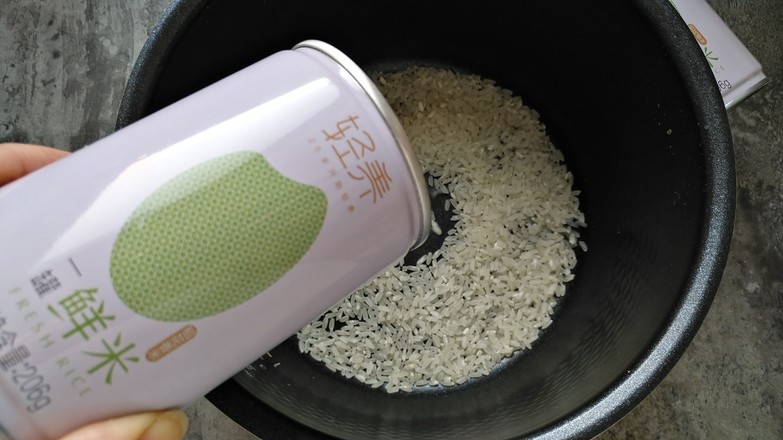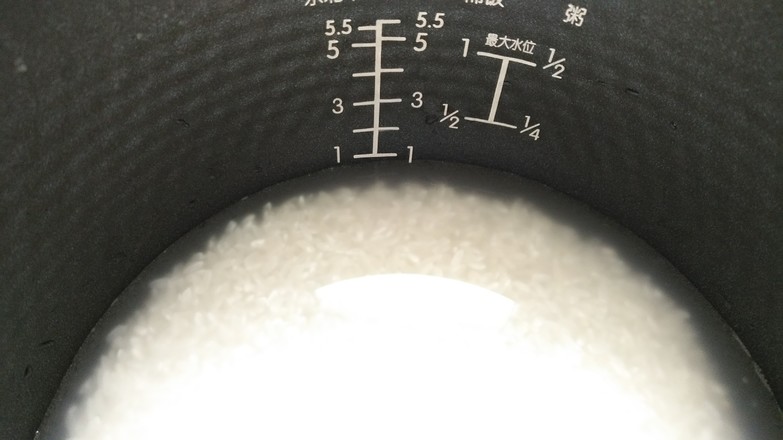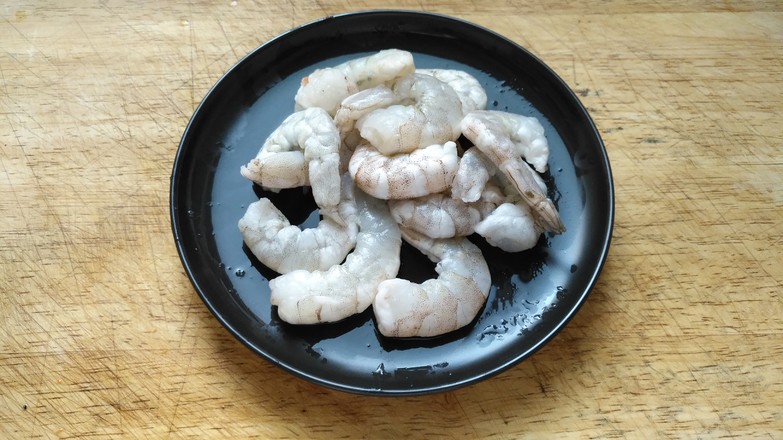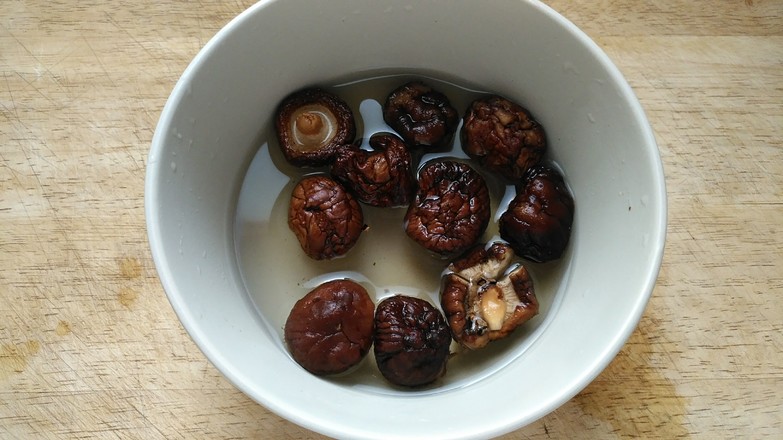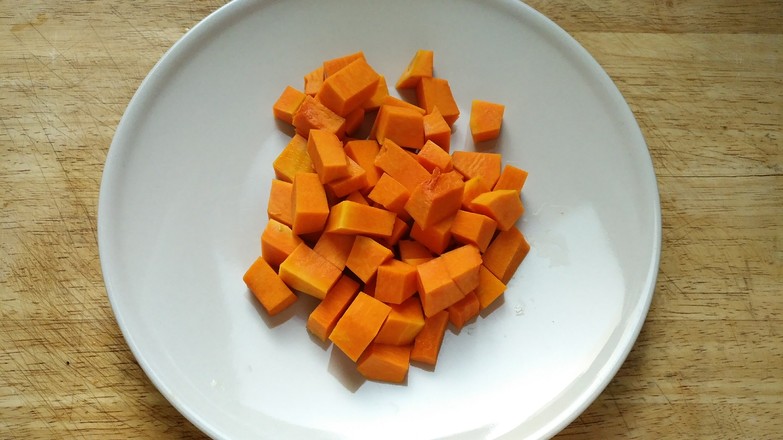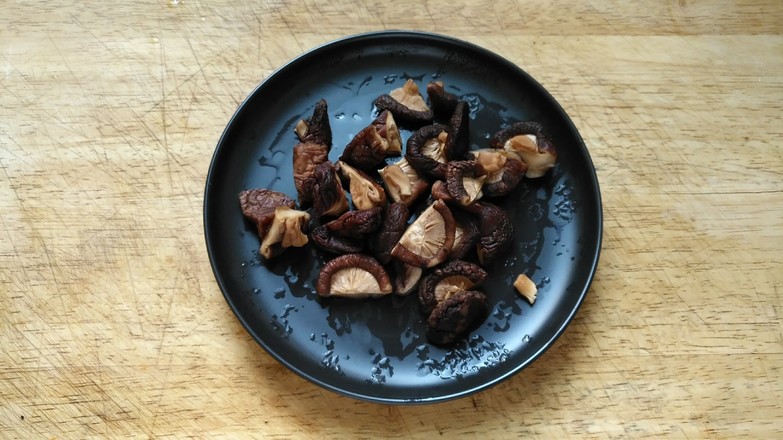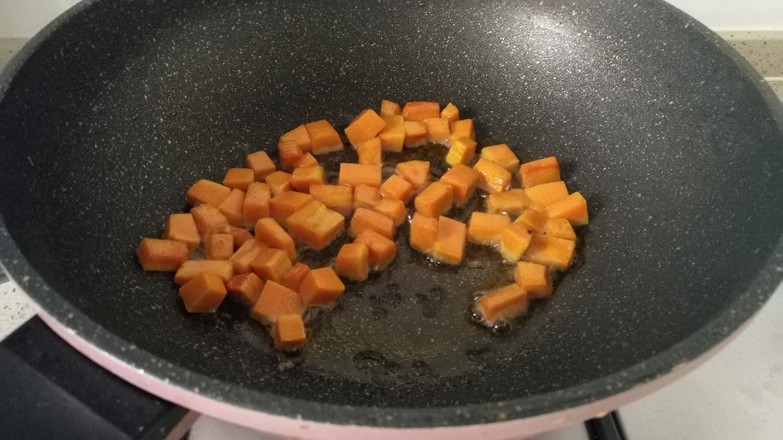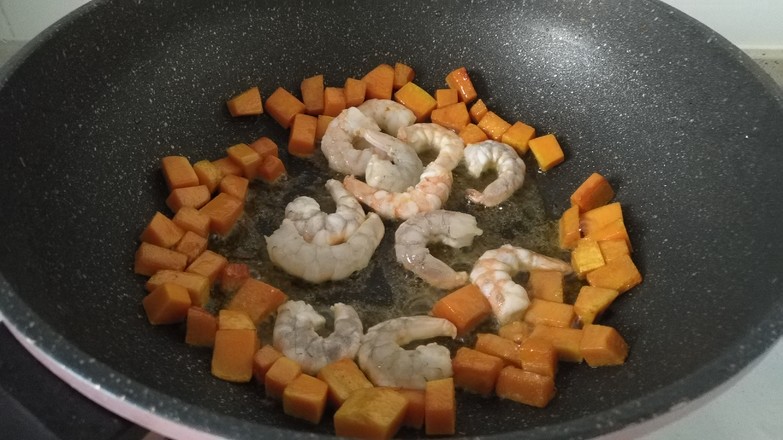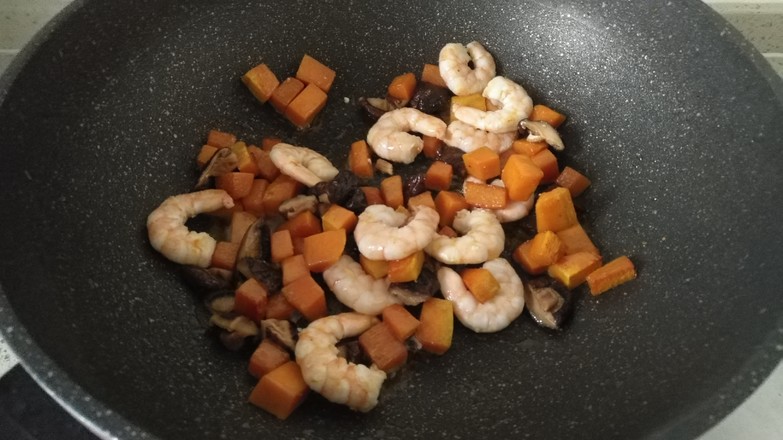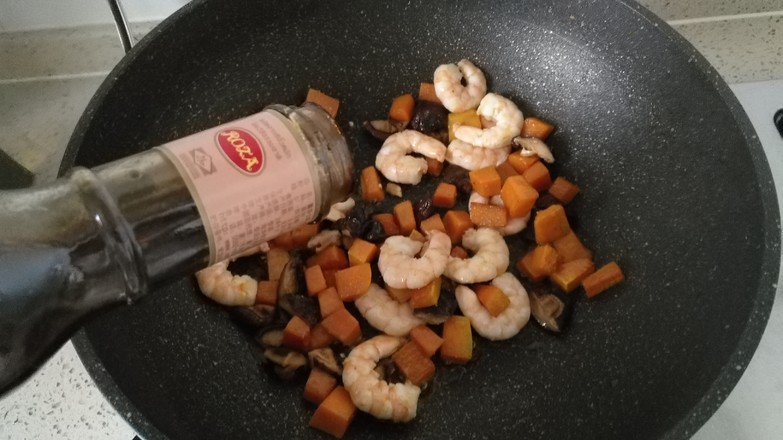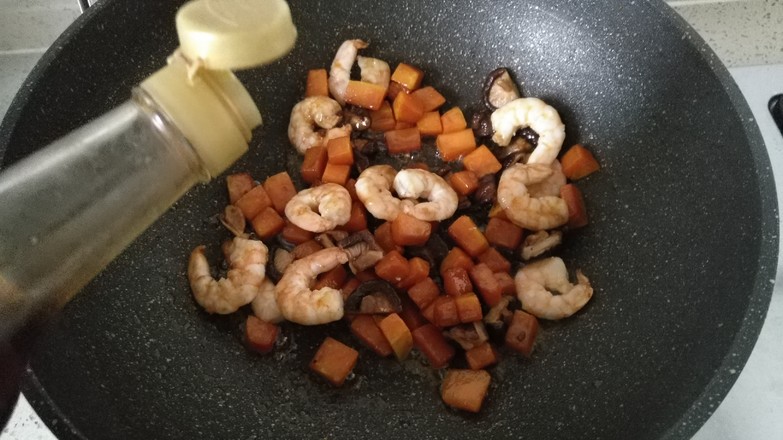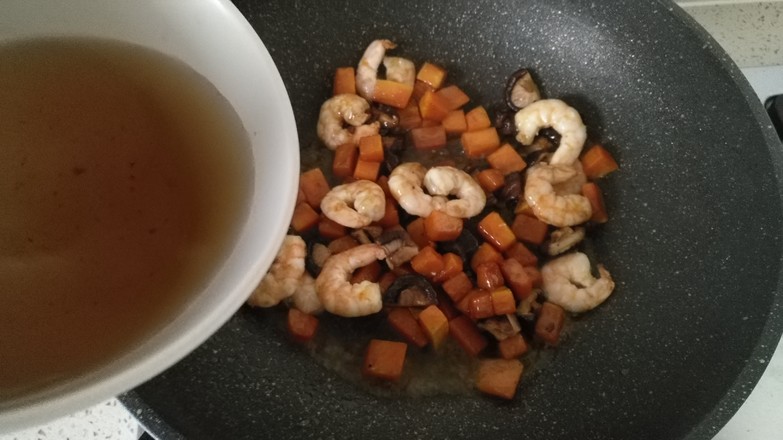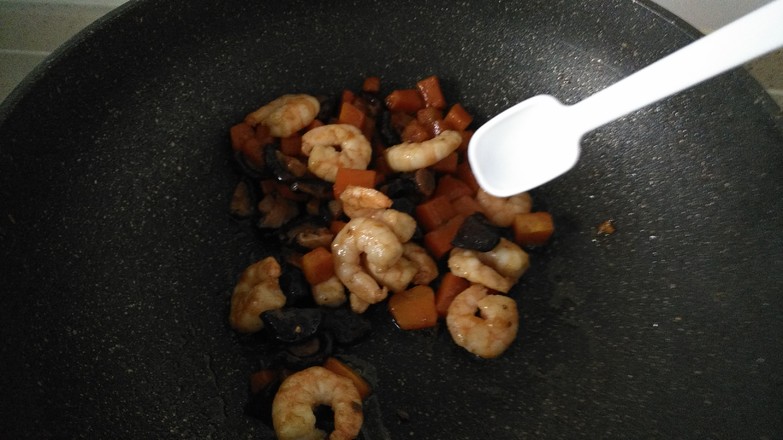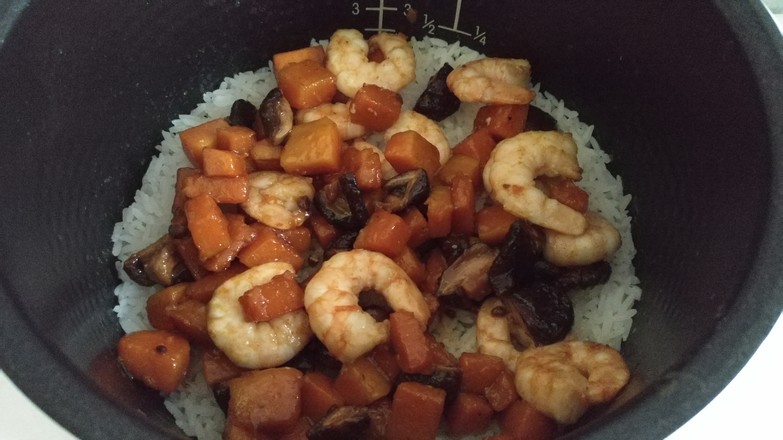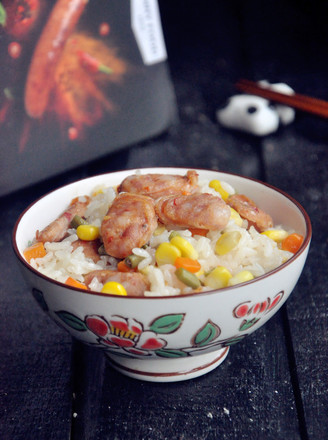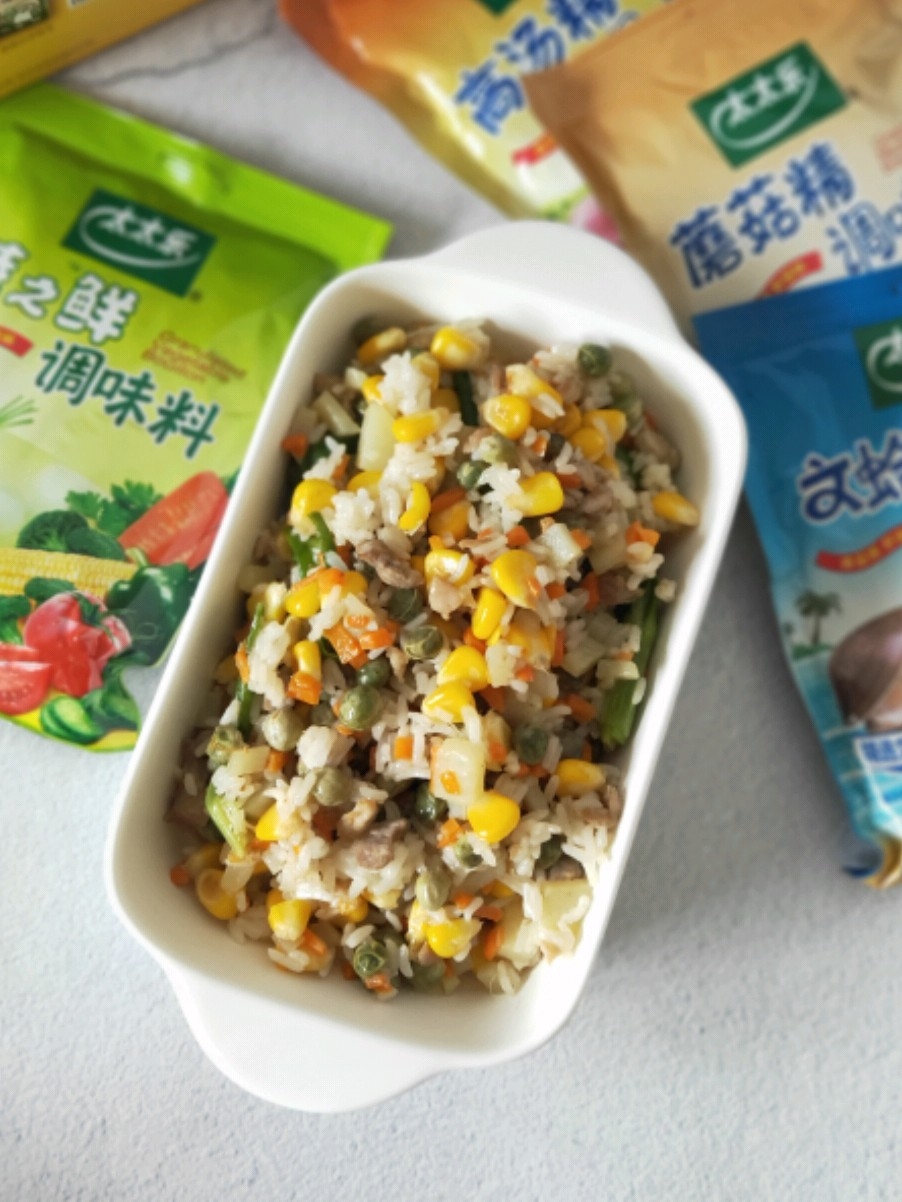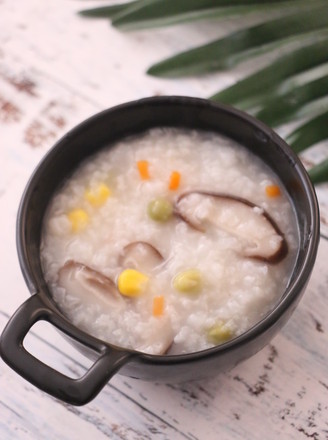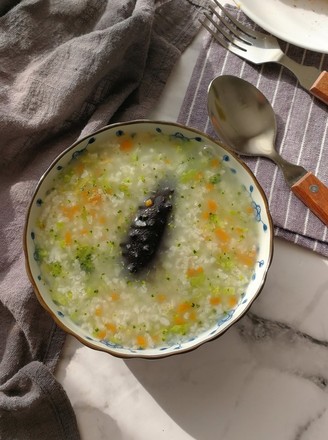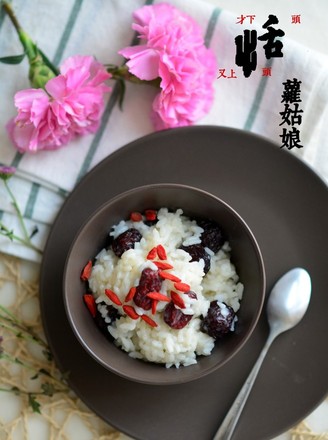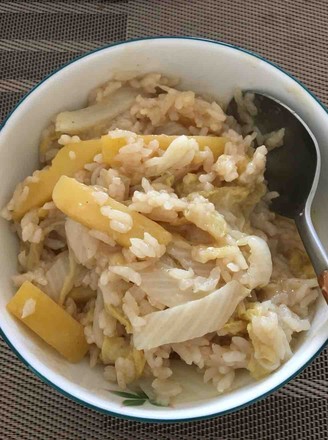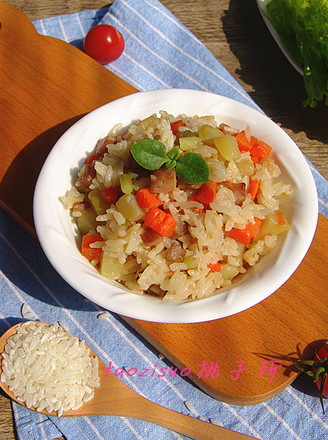Pumpkin and Shrimp Braised Rice
1.
Wash the rice cleanly. Pay attention that the high-quality rice is very clean. You only need to wash it once instead of repeatedly. Otherwise, it is easy to lose the vitamin B group on the surface and lose its nutritional value. The rice I use is very fresh and can be filled with nitrogen within 8 hours after shelling. It is almost non-washing.
2.
Put in less water than normal braising, and the rice cooker will start braising.
3.
Defrost and wash the shrimps, put a little salt and cooking wine to marinate for a while
4.
Wash dried shiitake mushrooms and soak in boiling water
5.
Peel the pumpkin, remove the flesh, wash, and cut into larger cubes
6.
Change the soaked mushrooms to a knife, don’t pour the water used for soaking the mushrooms, set aside
7.
Stir-fry the pumpkin in a frying pan
8.
Pull the pumpkin steak around, put the marinated shrimp in the middle, and fry until the shrimp changes color
9.
Stir fry the shiitake mushrooms
10.
Add a tablespoon of oyster sauce. The oyster sauce I used contains garlic, so I didn't use the garlic stew.
11.
Add another spoonful of cooking wine to remove the fishy taste
12.
Add some water for soaking shiitake mushrooms,
13.
Finally add salt to taste and stir-fry well
14.
When the rice is still 5 minutes away from maturity, add the fried shrimp and pumpkin, cover the lid and continue to simmer the rice for 5 minutes until the simmering process is over.
15.
Open the lid, use a rice spatula to mix the braised rice with shrimp and pumpkin, sprinkle the surface with chopped green onion, and a bowl of fragrant braised rice is ready. The pumpkin is soft and glutinous and fragrant, the shrimp is Q-bomb, and the rice grains are distinct and particularly fragrant. Do you want a bowl?
Tips:
When braising the rice, put less water than usual, because the fried ingredients will have some soup later, so you should not put too much water in the initial braising, otherwise the stewed rice will be soft and collapsed and the taste will be poor.
Shrimp should not be eaten with grapes, pomegranates, hawthorns, and persimmons. It will not only reduce the nutritional value of protein, but also stimulate the intestines and stomach, causing discomfort, and symptoms such as vomiting, dizziness, nausea, abdominal pain and diarrhea. Seafood and these fruits should be eaten at least at intervals 2 hours.


